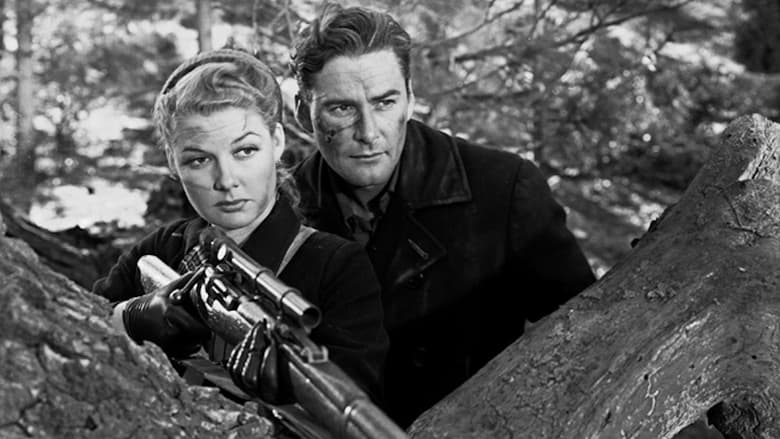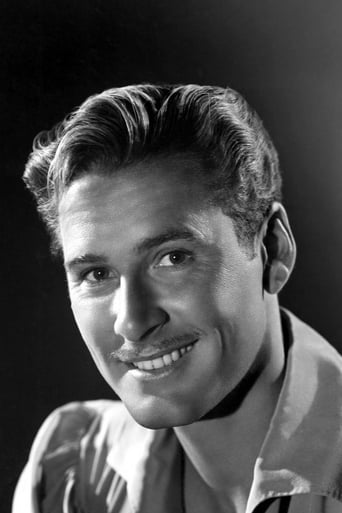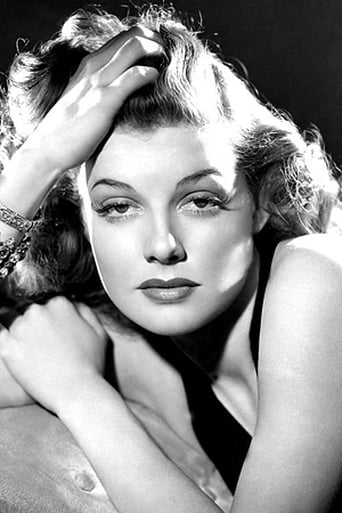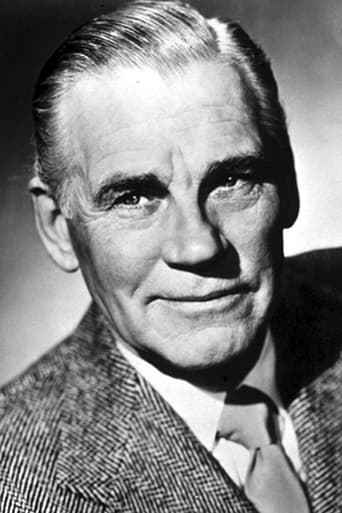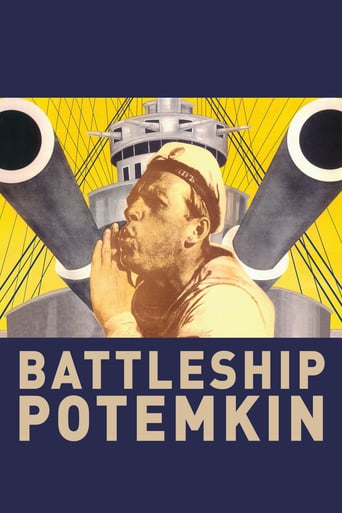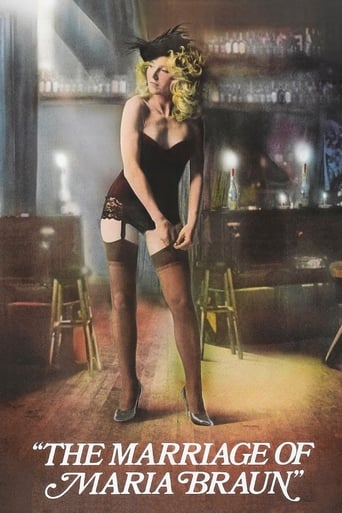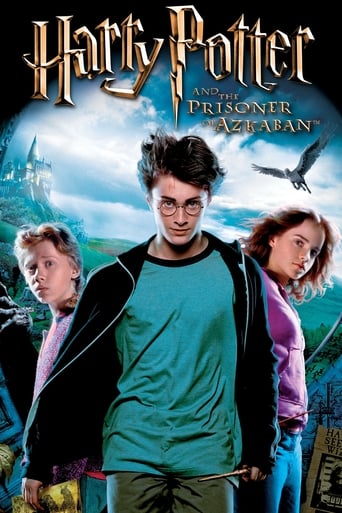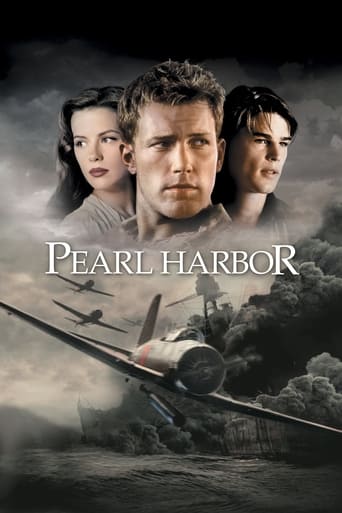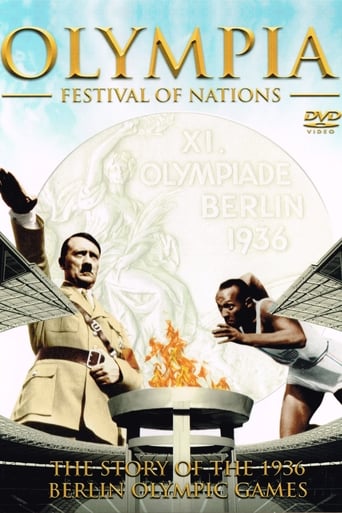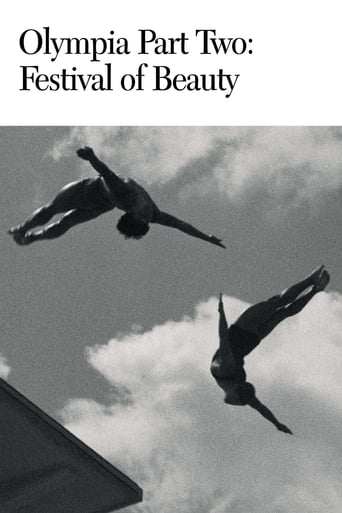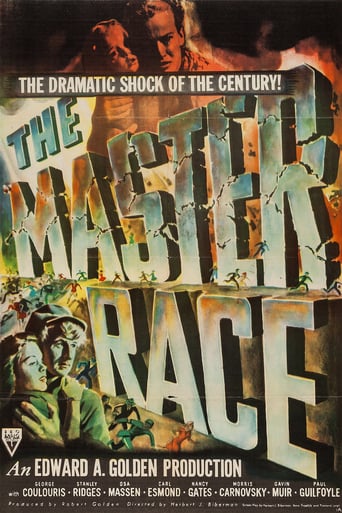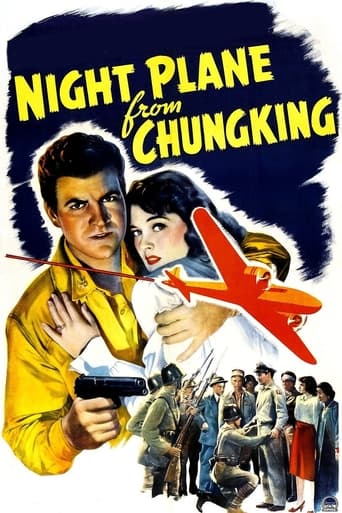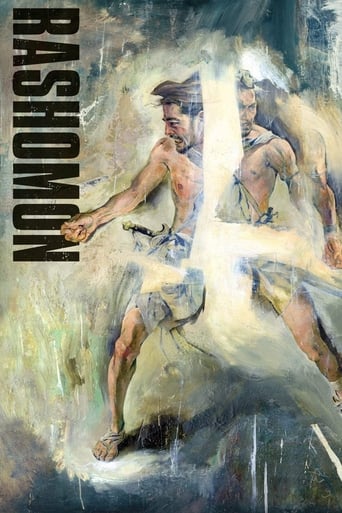Edge of Darkness (1943)
The film pivots around the local Norwegian doctor and his family. The doctor's wife (Ruth Gordon) wants to hold on to the pretence of gracious living and ignore their German occupiers. The doctor, Martin Stensgard (Walter Huston), would also prefer to stay neutral, but is torn. His brother-in-law, the wealthy owner of the local fish cannery, collaborates with the Nazis. The doctor's daughter, Karen (Ann Sheridan), is involved with the resistance and with its leader Gunnar Brogge (Errol Flynn). The doctor's son has just returned to town, having been sent down from the university, and is soon influenced by his Nazi-sympathizer uncle. Captain Koenig (Helmut Dantine), the young German commandant of the occupying garrison, whose fanatic determination to do everything by the book and spoutings about the invincibility of the Reich hides a growing fear of a local uprising.
Watch Trailer
Free Trial Channels
Cast


Similar titles
Reviews
Best movie ever!
If the ambition is to provide two hours of instantly forgettable, popcorn-munching escapism, it succeeds.
Amazing worth wacthing. So good. Biased but well made with many good points.
If you're interested in the topic at hand, you should just watch it and judge yourself because the reviews have gone very biased by people that didn't even watch it and just hate (or love) the creator. I liked it, it was well written, narrated, and directed and it was about a topic that interests me.
When a coastal town of Norway becomes the latest victim of Nazi oppression, the proud townspeople gather together to fight for their continued freedom, deal with traitors ("quislings") amongst their own and eventually show their power over German brutality. An excellent example of war propaganda, this masterful Warner Brothers drama is spared no detail in fighting against Hitler's machine of evil. Leading the way are rumored real-life Nazi spy Errol Flynn and "oomph girl" Ann Sheridan who shows that amongst her loveliness, she was also quite a good dramatic actress and had a truly wonderful spirit. Flynn is the leader of the resistance, a seemingly peace- loving fisherman who has no fear of losing his own life if his homeland can regain its freedom and the nasty fifth columnists all drowned with the help of the many fishing boats docked on their beautiful shores.Sheridan is the daughter of the town's beloved doctor (the always excellent Walter Huston), a peace-loving man who is against the resistance simply because of fear, but circumstances slowly change his mind. He's married to the quiet and wise Ruth Gordon (long before the days of her campy old ladies), and is looked up to by the town. Others highly involved include the local innkeeper (Judith Anderson, playing a wise, courageous and decent woman, a far cry from her many evil film roles) as well as other businessmen who don't want their livelihoods spoiled by the intrusion of these evil invaders. Some agree with the plan to fight, some want peace (particularly the local priest who must weigh his conscience later on as the situation worsens) and others want action immediately. Huston's family has its own issues with Gordon's factory owning brother (Charles Dingle) the biggest quisling of them all, an influence on their college age son (John Beal) who is exposed and banished.Of course, with any film dealing with wartime propaganda, at times, it is going to seem melodramatic or over-the-top, but the war years were filled with many tragic elements that fortunately didn't touch American soil outside the Japanese detention camps. The hard-working European farmers and merchants suffered greatly at the hands of German and Italian invaders, so there is no need for subtlety. Other movies have presented similar themes (my other favorite being 1940's "The Mortal Storm"), but "Edge of Darkness" is certainly one of the most riveting with its brilliant characterizations and often nuanced portrayals even of individual Nazi's. Case in point, Judith Anderson's love for a German soldier that isn't presented as betrayal, but does create conflict for her in the fact that the invasion of their town took her father's life. For this reason, she has become sort of a "Madame DeFarge" like character, although in this case, she isn't as vile. Her affections for both Flynn and Sheridan add a charming touch to her tough on the outside, pure sentiment on the inside, character, and for me, she's the most interesting of all the villagers.On the Nazi side, there's Helmut Dantine as the invading captain, a mess of a man who can't bear to listen to the anti-German tirades of various townspeople, particularly an aging professor whom he listens to as if he knows its the truth but just can't face it because of some sort of doomed destiny. He has a Norwegian mistress (Nancy Coleman) who is ill defined as a character, and I cringed a bit when she makes her final statement starting with "I would like to make a speech". Another apparent Nazi is really an ally plant who risks his life several times in his efforts to help the townsfolk. When tragic circumstances strikes Sheridan, Huston takes things into his own hands which culminates with a seemingly deadly result, and by this time, the Nazi's are worse monsters than anything that came out of Universal's stable of creatures. Excellent direction by "All Quiet on the Western Front's" Lewis Milestone holds everything together, and the screenplay by future director Robert Rossen (based on a novel by William Wods) is brilliant with only a few minor exceptions. Sid Hickox's photography is striking, and the music by Franz Waxman draws the viewer in emotionally from the time the opening credits roll. I only had issues with some of the cut away photo shots between the resistance and the Nazi's which made it seem that they were closer to each other than they obviously were. I could just see this being played in the movie theater in 1943 with audience members hissing every time the Nazi's did something despicable and large rounds of applause when they got their come-uppance. For that reason alone, this stands the test of time, because every time I have watched this (which has been many), I find myself wanting to do the same thing.
My review title is, of course, a take on the Warners film released 2 years earlier: "They Died With their Boots On", also starring Errol Flynn, as G.A. Custer, and featuring the annihilation of his cavalry command by a confederation of Native Americans attempting to defend their treatied homelands against the illegal invasion of swarms of gold seekers, who generally considered the N.A.s a much inferior race of 'savages', justifying their virtual annihilation, if necessary. Sound familiar? In this powerfully dramatized film, it's the Nazis who are playing the role of Custer and the gold seekers, who feel justified in overrunning the traditional territories of their neighbors, with the ultimate goal of replacing these peoples, considered genetically inferior, if not raving savages, with their own offspring. As in the case of Custer, the natives(Norwegians) have an advantage in a sizable numerical superiority and greater familiarity with the territory, if a marked disadvantage in armaments.Fulfilling its wartime purpose of encouraging public support to help defeat the Nazis, the film strongly suggests that, with sufficient outside support in smuggled armaments, 'resistance' groups in Nazi-occupied regions might be successful in significant sabotage and passive resistance projects, making a significant contribution toward the ultimate unraveling of the Nazi empire. The film ends with the locally victorious Norwegians trudging off into the forest near their fishing village, fearful of Nazi reprisals for their annihilation of the sizable German garrison, and presumably planning further sabotage operations until the Germans leave. Accompanying this visuals, we hear a historic FDR speech, featuring the plight of the Norwegians, along with a stirring final rendering of the recurring Luther hymn "A Mighty Fortress Is Our God" in the background, making the resistance against the Nazis seem more like a 'holy war' against the forces of evil. This is the only one of the 5 war-propaganda films starring Flynn released by Warners during the war that was not directed by Raoul Walsh. Lewis Milestone was born to Russian Jewish parents, who emigrated to the US when he was a teen. Thus, it's quite understandable that he relished the directing job of several anti-Axis films during the war. As with the present film, "The North Star" emphasizes the hopes and activities of 'resistance' groups within Nazi-controlled regions. The highly acclaimed "A Walk in the Sun" looks at the war from the myopic viewpoint of the ordinary soldier. "The Purple Heart" dramatizes the incarceration and trial of a group of American fliers captured by the Japanese. Like the fanatical Nazi Captain Keonig, in the present film, the fanatical Japanese commander involved commits suicide in the end: his indoctrinated assumption of what American servicemen are like, and the myth of the invincibility of the Japanese armed forces, shattered.Very ironically, Helmut Dantine, who plays Captain Keonig, imbued with the standard Nazi assumption of racial superiority, was the former leader of Vienna anti-Nazi activists, forced to flee to the US, winding up in LA. He played a similar role in several other wartime films, including "Northern Pursuit", where Flynn again plays his chief nemesis.The film begins with a Nazi patrol plane (which looks like a slightly modified Lockheed Hudson light bomber, used in several Warner wartime films) observes a Norwegian flag flying over a coastal German garrison, instigating a patrol boat to investigate. They discover the gruesome sight of hundreds of German and Norwegian bodies strewn all over outside and inside the compound and adjacent fishing village. Otherwise , both seem deserted , except for one deranged Norwegian, who is promptly machine-gunned. We will see a similar sight near the end of the film. Meanwhile, the remainder of the film consists of a flashback to events leading up to this massacre.The bulk of the film consists of characterizations of a spectrum of responses to the Nazi takeover: from outright cooperation with the Nazis, to uneasy neutrality, to determined passive and/or active resistance. Some change their position during the film. Another major section deals with the secret acquisition and hiding of armaments from a British submarine: part of a British plan for a coordinated uprising of all coastal towns against the local Germans. This plan is articulated by a British spy(played by Henry Brandon), as one of the garrison Germans. The last part of the film deals with the actual armed revolt. Although many Norwegians die, some seem immune to the German machinegun fire.Flynn's character, as the leader of the local resistance group, is named Gunnar, as was the most famous leader of Norwegian resistance(Gunnar Sonsteby), tales of his activities having already reached the outside when this film was scripted... Glamorous-looking Anne Sheridan, as Gunnar's gung-ho 'resistance' girlfriend, makes the most convincing romantic partner for Flynn in his 5 war-propaganda films...Nancy Coleman, who played an anti-Nazi German and Flynn's fleeting romantic interest in the previous "Desperate Journey", here plays the 'kept' Polish mistress of the collective German officers, who mocks them when they are facing annihilation, being shot in response...Richard Fraser plays the conflicted pastor: advocating non-resistance, but firing the first shots of the showdown, when the 'resistance' leaders are about to be executed.There's so much more to this film, but I'm about out of space.
A story incomparable of a people unconquerable about the underground movement in Norway , 1942 , based on the novel by William Woods . After two years under German rule , a small Norwegian fishing village rises up and revolts against the occupying Nazis . A fisherman (Errol Flynn) along with his loyal fiancée (Ann Sheridan) leads the local (Walter Huston , Ruth Gordon , Judith Anderson and several others) underground movement against a Nazi nasty captain (Helmut Dantine). The second part is quite starkly moving developing account of deeds that befall about the villagers and when they go into action.A surprisingly very strong version about Norwegian resistance with career-best interpretations from Errol Flynn and Ann Sheridan . With a spectacular opening reminiscent of 'Beau Gest' , the film gets action , pretty downbeat deeds , intense drama with moments of extraordinary power and breathtaking final battle . Although numerous problems happened throughout shooting , this movie contains impressive images and submitted performances . Director tries to expose war for what it is and not glorify it . Very well camera work by cameraman Sidney Hickock . Thrilling and evocative musical score by the classic Franz Waxman . Rating : Above average , the flick earned big high marks for its superb scenarios , credible acting and dramatic scenes .This War/drama is compellingly directed by Lewis Milestone , he was born in the Ukraine , but emigrated to America at 18 and he served in WWI becoming an assistant director on Army training films . Then War returned and Lewis was in thick of it with several fictional movies and a documentary . He often made chronicles of wartime conflicts and persisted in showing horror war from the point of view of the ordinary soldier . Milestone was using what he felt were the best means at his disposal to express his own philosophies about war in particular . Milestone's niche in movie history is secure with his War films and it is on these pictures that his reputation rests . As he showed WWI , winning Academy Award for ¨All quiet on the western front¨ , and WWII such as ¨Purple heart¨ , ¨Halls of Montezuma¨ , ¨Edge and darkness¨ , the best of which is ¨A walk in the sun¨ with remarkable intensity at times and Korean war as ¨Pork Chop Hill¨ ; and directed several others excellent movies in different fields , dramas as ¨Of mice and men¨ , Noir cinema as ¨Strange love of Martha Ivers¨, adventure as ¨Mutiny on the Bount¨ and heist-comedy as ¨Ocean's eleven¨, among others.The picture is set during German invasion of Norway and subsequent Nazi conquest , the historical events are the following : The invasion began on April 9, 1940. The German Navy and Airforce led the operation . The Hitler plan relied on surprise to avoid interception by the British and to prevent Norwegian forces from mobilizing. The sudden appearance of naval task forces took Norwegian defenders by surprise and allowed airfields around Oslo , Tondheim and Stevenager to be captured by the German intact. German forces at Trondheim advanced and linked up with forces in Oslo. Norwegian forces in central and southern began to surrender. In northern Norway British and French troops fighting against Germans in Narvik . But the Allied decided to pull out of Norway , evacuating forces from Narvik . After that , Nazi conquest was completed with help some collaborators as the famous ¨Quisling¨ who was a Norwegian prime minister whose collaboration with the Nazis meant his name became a term meaning traitor and in this film is represented by the Walter Huston , Ruth Gordon's son , John Beal .
Edge of Darkness is what Hollywood used to be about. Younger viewers will probably be shocked that indeed movies were once made that extolled virtues such as self sacrifice, heroism, patriotism and courage against overwhelming odds. While the setting is in Norway, it reflects what America once believed. There is no political correctness here. Pacifists and collaborators are viewed as traitors. Tolerance for the invader is unthinkable.Told in flashback we learn that a small Norwegian village has been under German occupation for several years. The Germans routinely harass, abuse and generally ride rough shod over the locals whose tempers have reached the boiling point. The Germans feel free to take what they please while the inhabitants struggle to exist.Slowly but surely the villagers, led by Gunnar Brogge (Errol Flynn) began fighting back by engaging in acts of sabotage, defiance and even assassination. The Germans counter with ever harsher regulations and measures. After receiving guns from the British, the people rise up and engage their oppressors in a climactic battle of annihilation. Yes, there was a time when guns were recognized as instruments of freedom.The performances in this film were outstanding. One can only cheer when Karen Stensgard (Ann Sheridan) proclaims "To a free Norway". Equally good performances were wrought by Helmut Dantine, Walter Huston and Richard Fraser. I particularly enjoyed Frasers transformation from a meek pastor who wants peace at any price, to a Tommy Gun toting avenger who saves the lives of soon to be executed hostages. Equally impressive is Hauptmann Koenig's (Helmut Dantine) wide eyed frightful exclamation, "You didn't see them, they just kept coming and coming...", when his headquarters is under siege.Very effective was the soundtrack which was dominated by the strains of "A mighty Fortress is our God".As the movie concludes we hear the voice of FDR invoking viewers to "Look to Norway" if they doubt why we were engaged in that titanic endeavor known as World War II..


